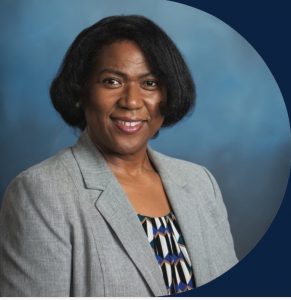“Broadening Equity & Diversity in Computing Education—Three Cases”
Friday, Feb. 5 at 1:00pm
Via Zoom
Email communications@ece.ufl.edu for Zoom info
| Made Possible with the Generous Support of Texas Instruments |
|---|
Abstract
Research highlighted during this presentation may include the following:
Case One:
Augmented Phonetic Transcription and CalculaIon Tool (aptct.auburn.edu) is complex multivariate problem in the field of Communications Disorders utilizing the International Phonetic Alphabet (IPA) as a transcription language to support students learning this IPA language. The common practice is for students to transcribe in hand-written form followed by manual evaluation of this work by instructors as a tedious phoneme-by-phoneme process, which may take several weeks to provide detailed feedback for a large number of words. The research question was, “How do we provide more timely and consistent feedback on their transcription accuracy?” Our focus was to develop an engaging, easy to use platform that could support interactive online learning and reduce complexity of feedback for transcript tasks.
Case Two (Projects supporting the Engineering Grand Challenge of Enhancing Virtual Reality VR and/or Augmented Reality AR:
Utilizing Virtual Reality to Promote Active Learning in Construction Management. Virtual Reality Construction Site Safety Simulator (VRC3S) supports Building Science students to safely assess the simulated construcIon site by utilizing construction measurement tools available in the simulation. This system was developed through participatory research with provides virtual active learning. VR-C3S was deployed on the Oculus Go and Windows environments and we compared this to traditional methods of instruction.
Case Three:
Augmented Reality Application to Enhance Training of Lumbar Puncture Procedure (supporting ENG Grand Challenge of Enhancing VR/AR). With the recent rapid development of Augmented Reality (AR) headsets, new possibilities emerge for applications of AR technologies to expand the vision of doctors and engineers, remove boundaries of educational processes and assist humanity in multiple endeavors. This paper focuses on the participator design process to support medical procedure training in collaboration with the school of VCOM (Via College of Osteopathic Medicine). Our team utilized the novel technologies the Occipital Bridge and then Meta 2 headset by Metavision to create a software application to enhance the student experience and extend training effectiveness.
Biography
Dr. Cheryl D. Seals is the Charles Barkley Endowed Professor of Computer Science at Auburn University. Dr. Seals has degrees in Computer Science from Grambling State University, North Carolina A&T State University, and Virginia Tech. Dr. Seals uIlizes HCI and UX to advance learning technologies in multiple domains. She is well-versed in methods needed to evaluate and illicit participatory feedback from novice, academic and mature audiences. Some of her teams develop novel AR/VR training tools to bolster student learning and moIvaIon. Dr. Seals collaborates with scientists in diverse fields to improve student user experience, motivation, and learning (i.e. pharmacy, chemistry, computer science, building science, and communications disorders). Dr. Seals loves to perform K-12 outreach related to her scholarship, and even in the midst of COVID-19 was able to provide virtual STEM camp experience for youth as a support of AU outreach mission. In her research and support of students, Dr. Seals has supervised dozens of graduate, undergraduate, REU students, and graduated ten PhDs.


